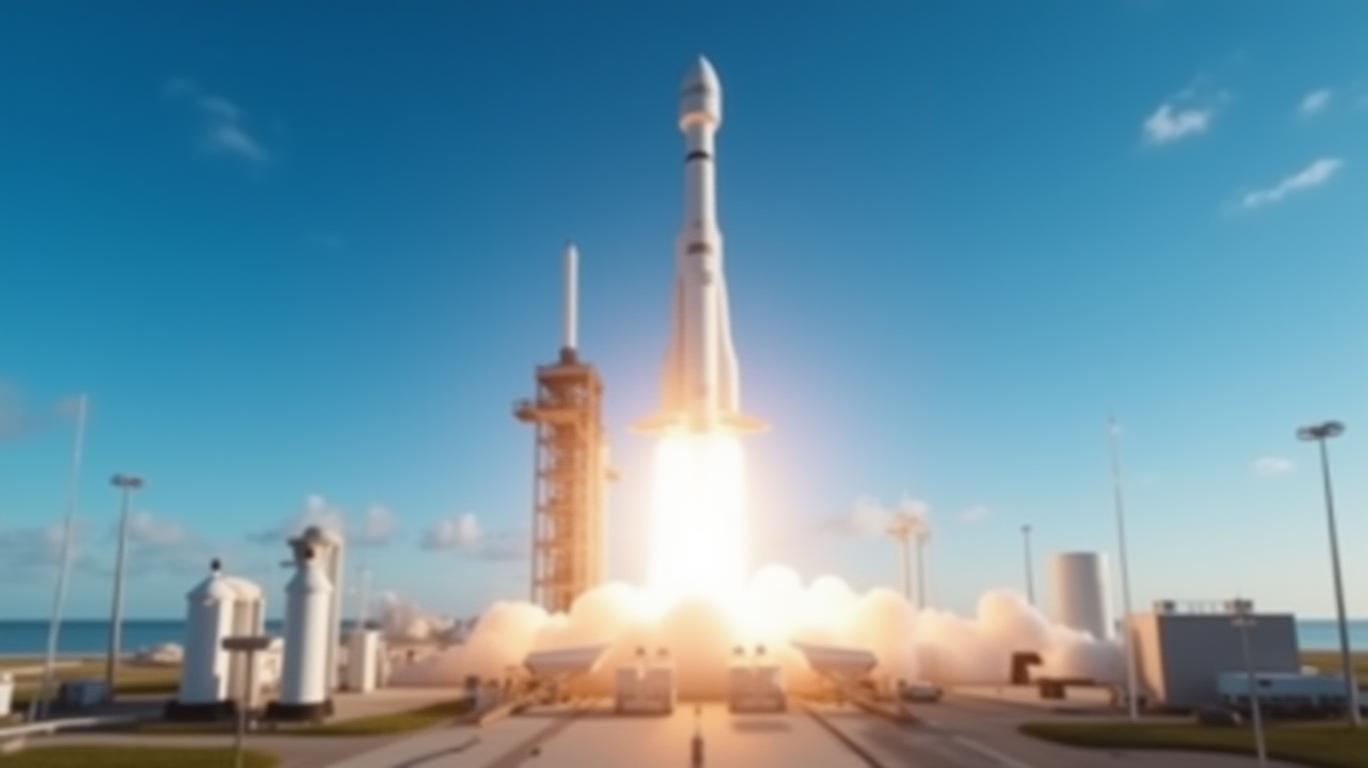Orbiting the Future: Why Starlink's Rocket Launch Signals a Satellite Internet Boom
The recent May 20, 2025, launch of 23 Starlink satellites aboard a reused Falcon 9 rocket marks a pivotal milestone in SpaceX's quest to dominate the satellite internet market. With 7,540 operational satellites already in orbit and a roadmap to deploy 42,000 by 2030, Elon Musk's vision of global high-speed internet access is no longer science fiction—it's a scalable, profit-driven reality. For investors, this event underscores a golden opportunity to capitalize on the satellite internet
, particularly in firms holding 6GHz spectrum licenses or partnering with Starlink. Here's why this sector is primed for explosive growth—and how to profit.Market Dominance: Starlink's Unrivaled Scalability

Starlink's 7,540 operational satellites (as of May 2025) and a 2024 revenue of $11.8 billion—surpassing SpaceX's traditional space transportation division—prove its commercial viability. The company's reuse of Falcon 9 boosters (94% of 2024 flights used recycled rockets) slashes marginal costs to ~$200k per launch, enabling rapid scaling. With 200,000 new subscribers quarterly and enterprise contracts (e.g., U.S. DoD, maritime shipping firms), Starlink is not just a tech experiment but a $10 billion annual revenue machine by 2025, outpacing rivals like Amazon's Kuiper and Telesat Lightspeed.
The Direct-to-Cell (D2C) initiative, launching in 2025, adds voice/data services to Starlink's capabilities, turning satellites into “cell towers in space.” This eliminates reliance on terrestrial infrastructure, making rural and remote regions financially viable for the first time.
Regulatory Tailwinds: 6GHz Spectrum and the Global Infrastructure Race
The FCC's May 2025 expansion of 6GHz unlicensed spectrum for Very Low Power (VLP) devices unlocks a critical enabler for Starlink's vision. By allowing devices like smartphones to operate at −5 dBm/MHz EIRP, the FCC has created a pathway for seamless integration of satellite and ground networks.
However, the 6GHz spectrum battle is far from over. EchoStar (DISH), a major U.S. spectrum holder, faces FCC scrutiny over its underutilized 2GHz AWS-4 licenses. If revoked, this spectrum could be reallocated to firms like SpaceX, accelerating Starlink's 5G ambitions. Meanwhile, T-Mobile (TMUS)—already partnering with Starlink for emergency texting—stands to benefit from spectrum-sharing agreements.
Investors should monitor these companies:
- EchoStar (DISH): Holds vast spectrum but faces regulatory risks.
- T-Mobile (TMUS): Leveraging Starlink's global reach to fill coverage gaps.
- Nemko (NEM): Provides compliance testing for 6GHz devices, a hidden gem in the ecosystem.
Infrastructure Boom: LEO Satellites Are the New Fiber Optics
The LEO satellite sector is undergoing a revolution akin to the 1990s telecom boom. With Starlink's $599 terminals and plans for Direct-to-Cell (no hardware changes needed), the barriers to rural adoption are crumbling. By 2025, Starlink will serve 70+ countries, including emerging markets like Brazil and India, where ground-based infrastructure lags.
Crucially, Starlink's 42,000-satellite goal isn't just about scale—it's about creating a self-sustaining ecosystem. Reusable rockets, low launch costs, and partnerships with governments (e.g., Ukraine's military) ensure steady demand.
The ROI potential here is staggering. LEO tech's low latency (<50ms) and high speeds (up to 250 Mbps) make it ideal for industries from telemedicine to smart manufacturing. The $500B global satellite market is projected to grow at 10% annually, with LEO firms capturing the lion's share.
Investment Thesis: Allocate Now to Spectrum Holders and Partners
The path to profit is clear:
1. 6GHz Spectrum Owners: Firms like EchoStar (if they retain licenses) and international players in the 22 nations adopting IMT-6GHz policies (e.g., Australia, Brazil) will benefit from spectrum scarcity.
2. Starlink Partners: T-Mobile's D2C collaboration and global carriers like Japan's KDDI (partnering for regional coverage) offer exposure to Starlink's dominance.
3. LEO Infrastructure Plays: Companies like AST SpaceMobile (developing rival D2C tech) or satellite manufacturers like Ball Aerospace (contractors for SpaceX) will see rising demand.
Conclusion: The Sky's the Limit—Literally
Starlink's May 2025 launch isn't just a rocket ride—it's a blueprint for the future of connectivity. With regulatory tailwinds, insatiable global demand, and a proven profit model, the satellite internet sector is primed for exponential growth. For investors, the time to act is now: allocate capital to 6GHz spectrum holders, Starlink partners, and LEO infrastructure firms before the next launch wave lifts valuations. The stars are aligning—don't miss this orbit.
JR Research

Comments
No comments yet